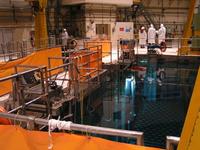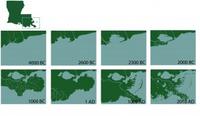-
Storing hydrogen underground could boost transportation, energy security
Large-scale storage of low-pressure, gaseous hydrogen in salt caverns and other underground sites for transportation fuel and grid-scale energy applications offers several advantages over above-ground storage, says a recent Sandia National Laboratories study sponsored by the Department of Energy’s Fuel Cell Technologies Office. Geologic storage of hydrogen gas could make it possible to produce and distribute large quantities of hydrogen fuel for the growing fuel cell electric vehicle market.
-
-
McAfee Labs report previews 2015 cyber threats, exploits, evasions
McAfee Labs November 2014 Threats Report offers an analysis of threat activity in the third quarter of 2014, and the organization’s annual 2015 Threats Predictions for the coming year. The report details a third quarter filled with threat development milestones and cyber events exploiting long-established Internet trust standards. McAfee Labs forecasts a 2015 threat landscape shaped by more attacks exploiting these standards, new attack surfaces in mobile and Internet of Things (IoT), and increasingly sophisticated cyber espionage capabilities, including techniques capable of evading sandboxing detection technologies.
-
-
Re-thinking Southern California earthquake scenarios

New three-dimensional (3D) numerical modeling that captures far more geometric complexity of an active fault segment in southern California than any other, suggests that the overall earthquake hazard for towns on the west side of the Coachella Valley such as Palm Springs and Palm Desert may be slightly lower than previously believed.
-
-
Coordinated cyberattacks by Iran-based hackers on global critical infrastructure
Irvine, California-based cybersecurity firm Cylance last week released a report detailing coordinated attacks by hackers with ties to Iran on more than fifty targets in sixteen countries around the globe. Victim organizations were found in a variety of critical industries, with most attacks on airlines and airports, energy, oil and gas, telecommunications companies, government agencies and universities.
-
-
Growing cybersecurity threats offer opportunities for cybersecurity businesses
A 2013 report from the U.S. Computer Emergency Readiness Team(US-CERT) noted that the number of cyberattacks reported by federal agencies had skyrocketed 782 percent since 2006, to nearly 49,000, in 2012. Today, the figure is much higher. The increasing threat of cyberattacks from domestic and foreign actors has opened up opportunities for cybersecurity professionals, many of whom held positions with the U.S. military or intelligence agencies. For the private sector, cybersecurity spending is expected to reach $71.1 billion this year, and expected to grow about 9 percent annually through 2016.
-
-
Insurance industry needs support to address effects of climate change on the built environment
A new report finds that the increasing frequency of extreme weather brought on by climate change adversely affects real estate values and increases the probability of property damage occurring in urban areas. In the last ten years alone, direct losses in real estate and infrastructure as a result of natural disasters has tripled, reaching $150 billion per year. The report highlights the steps the insurance industry has taken to adopt risk standards for climate change across the industry, from catastrophe models and scenario analysis to insurance products that incentivize risk-reducing building practices.
-
-
Using earthquake research to refine fracking methods
Researchers at Oklahoma State University (OSU) are using historical earthquake data to make oil and natural gas drilling more efficient. Members of the university research team found that hydraulic fracturing, or fracking, a process in which water and sand are blasted at high pressure into rock to remove oil, can cause an effect similar to earthquakes. Data gleaned from historical earthquake experiences have told scientists much about what happens to the rock during such events – and the knowledge may allow oil companies to understand how to extract gas without also removing groundwater.
-
-
DOJ’s new cyber unit to provide legal guidance on electronic surveillance
The Justice Department is creating a cybersecurity unit within its Computer Crime & Intellectual Property Section (CCIPS) to provide legal guidance on electronic surveillance investigations.The unit will also work with Congress on cybersecurity legislation and focus on cybercrime prevention.
-
-
Improving nuclear power plant safety by looking at nature
Within the nuclear industry, hazardous salt solutions can arise within industrial containment vessels. The salt solution precipitates out, forming structures with strange morphologies that bear a resemblance to stalagmites. If left unchecked, they could build up and cause a problem in the nuclear containment chamber. Currently, these containment chambers are checked regularly to prevent this from happening. Taking inspiration from nature, researchers have created a versatile model to predict how stalagmite-like structures form in nuclear processing plants — as well as how lime scale builds up in kettles.
-
-
Risks of terrorists attacking, or using materials from, a nuclear power plant are low: Experts

Energy analysts who support new nuclear power plants construction insist that the probability of a terrorist nuclear attack by land, sea, or air is extremely low. They reject arguments by nuclear power opponents that terrorist groups may one day attack a nuclear plant, or build an improvised nuclear bomb using materials stolen from a nuclear power plant – and that governments should, therefore, end construction of new nuclear power plants. Climate scientists supporting reduction in CO2 emissions wrote that “There is no credible path to climate stabilization that does not include a substantial role for nuclear power.”
-
-
Washington State supports new Hanford project, but worries about cost
The state of Washington is supporting a new facility which would lessen the load on the Hanford vitrification (vit) plant to process nuclear waste, but has expressed concerns about how the U.S. Department of Energy (DOE) will pay for the project. Only rough estimates of the cost of the project – called LAWPS, or the Low-Activity Waste Pretreatment System — have been made, but these estimates run between $243 million and $375 million, though that number does not include infrastructure costs such as the addition of roadways and utility services.
-
-
Micro-capsules and bacteria used in self-healing concrete
Researchers are aiming to develop a novel self-healing concrete that uses an inbuilt immune system to close its own wounds and prevent deterioration. Self-healing concrete could vastly increase the life of concrete structures, and would remove the need for repairs, reducing the lifetime cost of a structure by up to 50 percent. Over seven per cent of the world’s CO2 emissions are caused by cement production, so reducing the amount required by extending the lifetime of structures and removing the need for repairs will have a significant environmental impact.
-
-
CO2 warming effects already felt a decade after being emitted
It takes just ten years for a single emission of carbon dioxide (CO2) to have its maximum warming effects on the Earth. This is according to researchers who have dispelled a common misconception that the main warming effects from a CO2 emission will not be felt for several decades. This means that the benefits from emission reductions — the avoidance of extreme weather events such as droughts, heatwaves, and flooding — will be felt by those who have worked to curb the emissions and not just future generations. Some of the bigger climate impacts from warming, however, such as sea-level rise, melting ice sheets, and long-lasting damage to ecosystems, will have a much bigger time lag.
-
-
Research shows how global warming links to carbon emissions
A team of researchers from the Universities of Liverpool, Southampton, and Bristol have derived the first theoretical equation to demonstrate that global warming is a direct result of the build-up of carbon emissions since the late 1800s, when man-made carbon emissions began. The results are in accord with previous data from climate models. The results show every million-million tons of carbon emitted will generate one degree Celsius of global warming. They also show that the build-up of carbon emitted over the last 200 years will then last for many centuries to millennia even if carbon emissions are subsequently phased out.
-
-
Southeastern Louisiana has a problem: "The sea is rising and the land is sinking"

Southeastern Louisiana is drowning at the rate of one football field per hour, totaling up to sixteen square miles annually. In just eighty years, sea level rise, fossil fuel extraction, and having too few wetlands separating the Gulf from the flood protection levee systems have caused some 2,000 square miles of Louisiana’s coastal landscape to sink into the Gulf of Mexico. The issues facing Louisiana’s southeastern coast pose a threat to American energy and economic stability. A $50 billion, 50-year coastal restoration plan, formulated in 2007, is yet to be accepted and funded, but experts note that if sea-level rise is as bad as the worst case scenario, several projects at the heart of the restoration plan would become infective.
-
More headlines
The long view
Water Wars: A Historic Agreement Between Mexico and US Is Ramping Up Border Tension
As climate change drives rising temperatures and changes in rainfall, Mexico and the US are in the middle of a conflict over water, putting an additional strain on their relationship. Partly due to constant droughts, Mexico has struggled to maintain its water deliveries for much of the last 25 years, deliveries to which it is obligated by a 1944 water-sharing agreement between the two countries.
Trump Is Fast-Tracking New Coal Mines — Even When They Don’t Make Economic Sense
In Appalachian Tennessee, mines shut down and couldn’t pay their debts. Now a new one is opening under the guise of an “energy emergency.”
Smaller Nuclear Reactors Spark Renewed Interest in a Once-Shunned Energy Source
In the past two years, half the states have taken action to promote nuclear power, from creating nuclear task forces to integrating nuclear into long-term energy plans.
Keeping the Lights on with Nuclear Waste: Radiochemistry Transforms Nuclear Waste into Strategic Materials
How UNLV radiochemistry is pioneering the future of energy in the Southwest by salvaging strategic materials from nuclear dumps –and making it safe.
Model Predicts Long-Term Effects of Nuclear Waste on Underground Disposal Systems
The simulations matched results from an underground lab experiment in Switzerland, suggesting modeling could be used to validate the safety of nuclear disposal sites.
